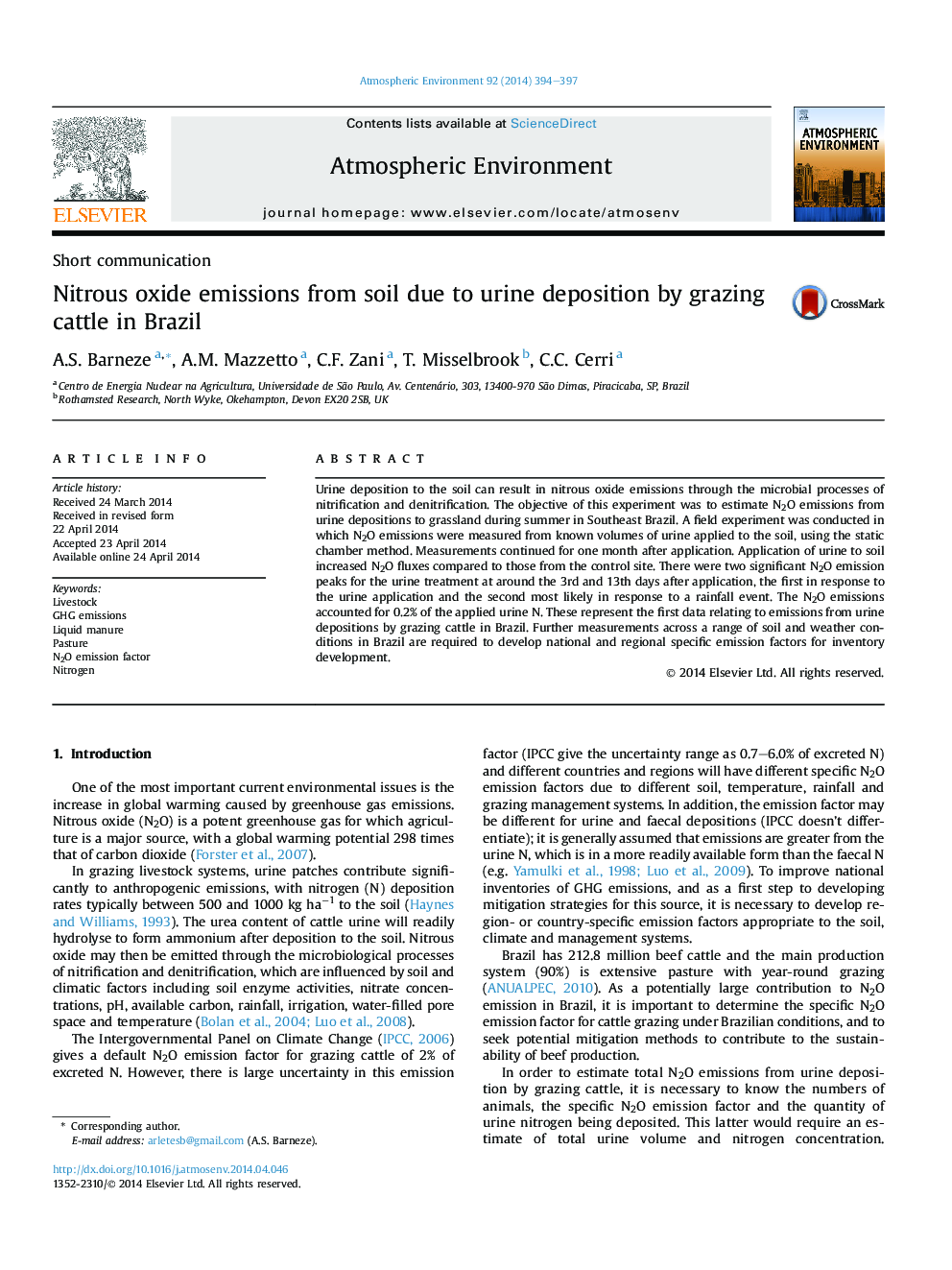| Article ID | Journal | Published Year | Pages | File Type |
|---|---|---|---|---|
| 6339437 | Atmospheric Environment | 2014 | 4 Pages |
Abstract
Urine deposition to the soil can result in nitrous oxide emissions through the microbial processes of nitrification and denitrification. The objective of this experiment was to estimate N2O emissions from urine depositions to grassland during summer in Southeast Brazil. A field experiment was conducted in which N2O emissions were measured from known volumes of urine applied to the soil, using the static chamber method. Measurements continued for one month after application. Application of urine to soil increased N2O fluxes compared to those from the control site. There were two significant N2O emission peaks for the urine treatment at around the 3rd and 13th days after application, the first in response to the urine application and the second most likely in response to a rainfall event. The N2O emissions accounted for 0.2% of the applied urine N. These represent the first data relating to emissions from urine depositions by grazing cattle in Brazil. Further measurements across a range of soil and weather conditions in Brazil are required to develop national and regional specific emission factors for inventory development.
Related Topics
Physical Sciences and Engineering
Earth and Planetary Sciences
Atmospheric Science
Authors
A.S. Barneze, A.M. Mazzetto, C.F. Zani, T. Misselbrook, C.C. Cerri,
